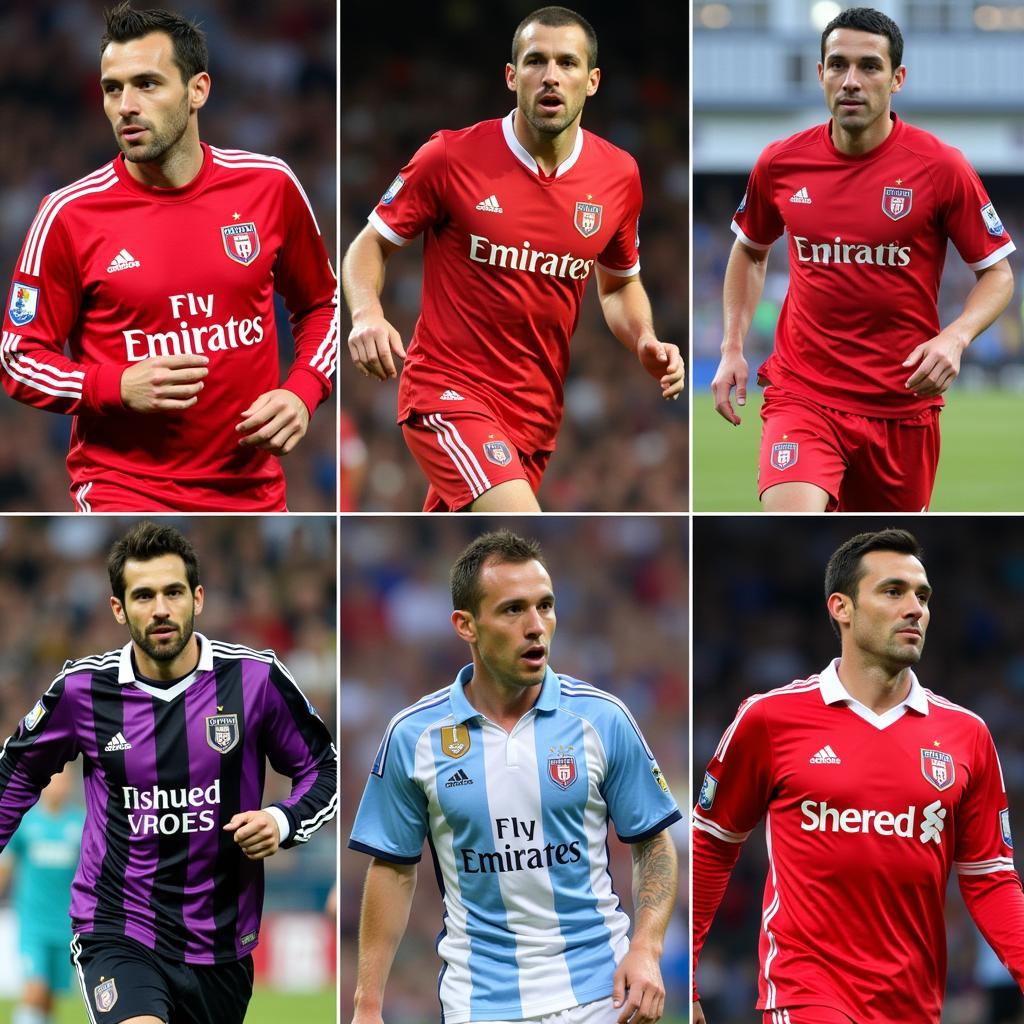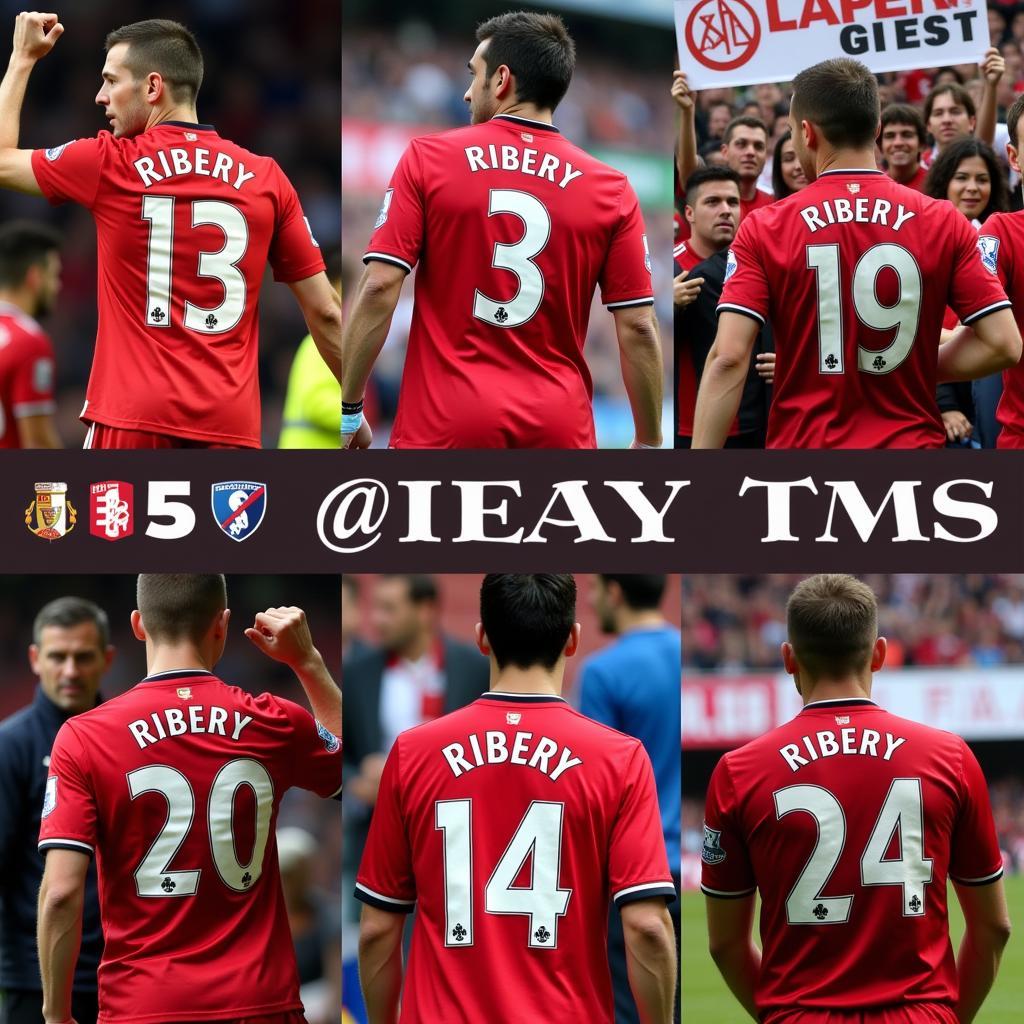
Franck Ribery Kit Number: A Legacy Etched in Numbers
Franck Ribery, the wizard of the wing, a name synonymous with electrifying dribbling and pinpoint crosses. His kit number, a seemingly small detail, often tells a story of a player’s journey, their preferred position, and sometimes, their legacy. This article delves into the significance of Ribery’s kit numbers throughout his illustrious career, exploring the stories behind the digits he wore with pride.
The Significance of the Number 7: Bayern Munich and Beyond
For much of his career, particularly during his prime at Bayern Munich, Ribery was intrinsically linked with the number 7. This number, often associated with wingers and attacking midfielders, became his trademark. It symbolized his dynamic playing style, his ability to cut inside and create chances, and his crucial role in the team’s attacking prowess. The number 7 became so intertwined with Ribery’s identity that it almost felt incomplete to see him without it. At Bayern, he cemented his legendary status wearing this number, contributing to countless titles and memorable moments.
Wearing the number 7, Ribery formed a formidable partnership with Arjen Robben on the opposite flank, creating the iconic “Robbery” duo that terrorized defenses across Europe. Their lightning-fast attacks, intricate passing plays, and ability to score crucial goals became a hallmark of Bayern Munich’s success for over a decade. Ribery’s number 7 jersey became a symbol of this era, a testament to his individual brilliance and his contribution to the team’s collective triumphs.
 Franck Ribery in his Bayern Munich number 7 jersey.
Franck Ribery in his Bayern Munich number 7 jersey.
Exploring Other Kit Numbers Worn by Ribery
While the number 7 is undoubtedly the most recognizable kit number associated with Ribery, he donned other numbers throughout his career, each representing a different stage of his journey. At Galatasaray, he wore the number 24, and at Fiorentina, he donned the number 7, demonstrating a preference for his symbolic number. At Salernitana, he chose number 7 again, showing his consistent attachment to the number. These different numbers reflect the different contexts and challenges he faced, adapting and excelling in various environments.
Early in his career at clubs like Boulogne, Alès, Brest, and Metz, Ribery experimented with various kit numbers, including 22, 27, 26, 14 and 10 respectively. This period of exploration eventually led him to the number 7, which became his signature and a symbol of his rise to stardom. These early experiences shaped his playing style and laid the foundation for the legendary player he would become.
 Franck Ribery wearing different kit numbers during his career.
Franck Ribery wearing different kit numbers during his career.
Why “Ribery Kit Number” Matters to Fans
The interest in a player’s kit number often goes beyond mere curiosity. It represents a connection between the player and the fans, a tangible symbol of their admiration. Searching for “Ribery Kit Number” signifies a desire to understand the player’s history, their preferred position, and their significance within the team. It’s a way for fans to connect with their idols, to own a piece of their legacy, and to celebrate their achievements. For many, owning a Ribery jersey, particularly with his iconic number 7, is a badge of honor, a way to show their support and appreciation for a true footballing legend.
Understanding the history and significance of Ribery’s kit numbers provides a deeper appreciation for his career. It’s a reminder of his journey, his adaptability, and his unwavering dedication to the beautiful game. From his early days experimenting with different numbers to his legendary status cemented with the number 7, Ribery’s story is etched in the digits he wore with pride and passion.
 Fans wearing Franck Ribery jerseys with different kit numbers.
Fans wearing Franck Ribery jerseys with different kit numbers.
Conclusion: A Number, a Legacy, a Legend
Franck Ribery’s kit number, particularly the iconic number 7, is more than just a number; it’s a symbol of his brilliance, his legacy, and his impact on the world of football. From his early career to his peak at Bayern Munich, the numbers he wore tell a story of a player who consistently strived for excellence, adapted to different challenges, and left an indelible mark on the game. “Ribery kit number” represents a search for connection, a desire to understand the journey of a legend, and a testament to the enduring power of football to inspire and unite.
FAQ
- What was Franck Ribery’s most famous kit number? (Answer: 7)
- What number did Ribery wear at Fiorentina? (Answer: 7)
- Did Ribery ever wear the number 10? (Answer: Yes, at Metz.)
- What numbers did Ribery wear early in his career? (Answer: Various, including 22, 27, 26, 14, 10.)
- Why is a player’s kit number important to fans? (Answer: It represents a connection to the player and their legacy.)
- What other clubs besides Bayern Munich did Ribery play for? (Answer: Galatasaray, Fiorentina, Salernitana, Boulogne, Alès, Brest, Metz.)
- What position did Franck Ribery play? (Answer: Winger/Attacking Midfielder)
Gợi ý các câu hỏi khác, bài viết khác có trong web.
- Sự nghiệp của Franck Ribery tại Bayern Munich
- Những đồng đội nổi bật của Franck Ribery
- Top 10 bàn thắng đẹp nhất của Franck Ribery